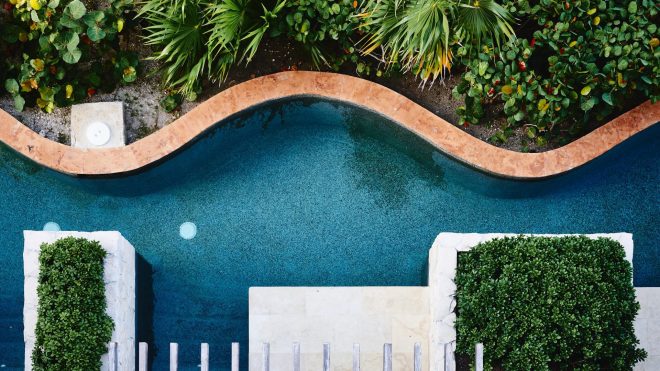Without a doubt, when it comes to landscaping, we all want to save money. But we also want to have eye-catching and welcoming scenery. A vibrant landscape not only beautifies your home or business, it also increases the property value. When you care for your investment, it cares for you back. Your lawn and landscape design is the first thing people see when arriving at your business or house. This is the place where your children play and your pets run. It’s where you host birthday parties and backyard barbecues. Why wouldn’t you put some effort into making it great? DIY lawn care may seem cheaper but when you consider the time, materials, and labor that goes into a healthy yard, hiring a professional to handle it makes the most sense. Plus, using a reputable company means you will save yourself from the expenses of DIY mistakes. There are some things you can do to understand your land to help in the creation of your own picturesque landscape design. We have compiled the top 5 landscaping tips to assist you in caring for your property.
Understand your soil types.
There are so many components of good soil and vegetation responds differently to the minor changes in the dirt. For example, hydrangeas produce an array of blue, purple, or pink flowers based on the acidy of the soil. More acidic soil will give you blue hydrangeas while alkaloid-heavy soil will produce purple flowers and neutral soil results in pink. Some plants do better in sandy soil with quick drainage while others need clay-like soil and plenty of water. You also have options in between, such as silt soils or loam soil. All the soil types have characteristics that vegetation responds to in different ways. Getting your soil tested and knowledgeable selections of supplemental soil for your landscape will make your plants thrive. Using vegetation that will behave better in your particular soil conditions is a smart investment in your landscape. It is possible to modify your soil for the specific needs of some plants. You can add things such as peat mulch, crushed limestone, or other supplements depending on what goal you want to reach. Make sure the difference between what soil you have and what soil you need stay within reasonable range. Otherwise you will spend too much time and money trying to maintain it.
For more information, check out A Closer Look at Dirt: Understanding Soil Types
Use native, non-invasive plants.
Selecting appropriate plants for your landscape will get your better results for your investment. This goes hand-in-hand with understanding your soil type. Each region in the US has indigenous vegetation that thrives better the general climate conditions and soil composition. Making sure to use native plants that fit well with your soil type will ensure a flourishing scenery. Understanding this will keep you from fighting the elements because your choices will have natural adaptations to withstand the weather. Of course, you may use non-native vegetation, but be sure to choose plants with similar climate conditions or they stand little chance of survival. On an environmental note, using non-invasive plants means that when seeds spread, as they inevitably do, these plants will not compete with or kill the plant life native to the area.
Placement and spacing matters.
Understanding the room required for different plants will make sure they flourish. A variety of flowers, bushes, and ornamental trees need more room for their root systems. If you pick a plant or bush that expands a great deal but do not have the room for it, it will adversely affect that plant plus the others around it. You will find that the overcrowded plants will choke and wither away. See to it that you recognize the spacing demands in between plants. Many hedges and ornamental trees need a minimum of 3 feet between each other for adequate room to grow.
Know your climate and flowering schedules.
Various plants bloom at different times throughout the year. If all of the plants in your landscape peak at the same time, then your yard will look great for a few weeks every year. Every other week of the year it will lack its luster and fail to impress. As one way to prevent this, you can select decorative shrubs and plants that look nice and produce flowers, a popular example being azaleas. It’s also a great idea to group and stagger the plants in your landscape. Plant crocus and tulips amongst later blooming plants so the bulbs blooming in the spring are followed by other flowering plants. This carries over the beauty of your landscaping season to season. This cycle will ensure an attractive landscape for your property year round.
Let mulch do some heavy lifting.
Using mulch, such as wood chips, around bushes, shrubs, and other decorative trees will help protect them. Mulch makes the ground around your plant-life more visually appealing and is less of a hassle than you may think. Not only does mulch look better, it will help repel weeds, pests, and excessive moisture that could damage your plants. As mulch breaks down, it actually decomposes into the soil and turns into nutrients for your landscaping. Mulch ties landscaping together and puts a common barrier of defense around the vegetation at your home or business.
You Can Trust The Professionals At Going The Extra Mile
When it comes to successful landscape design and implementation, it helps having a team of people with an in-depth understanding of the outdoors. Following any of the advice from our landscape designers in Little Rock, AR will help keep your lawn and landscape the best in the neighborhood.

